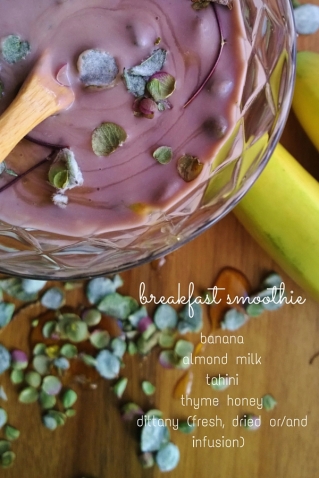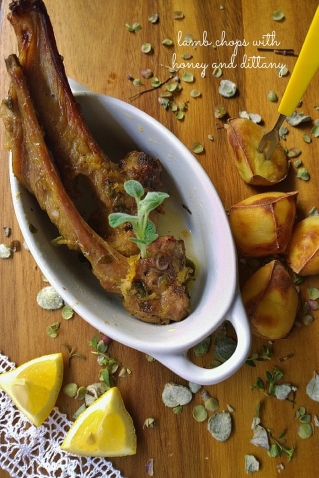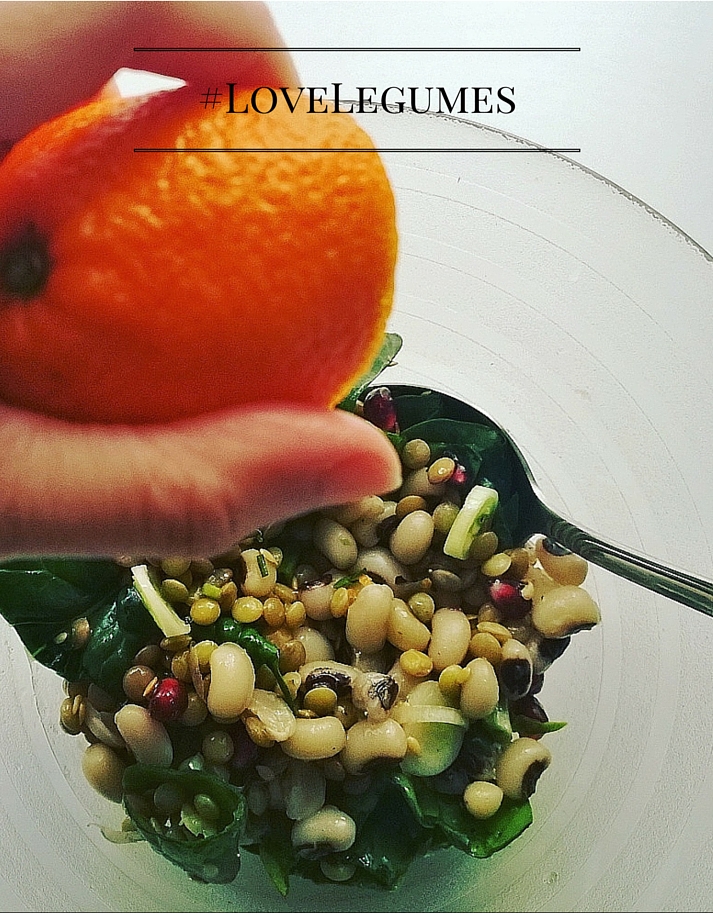Ever been on holiday to Crete? Snaking up and down the narrow coastal and mountain roads you were probably overwhelmed by a botanical scent diffused into the air. Maybe even stopped the car to get some fresh air only to be perked up by a delirious smell of wild herbs. Crete prides itself as “a continent on an island”. There is some truth in this indeed, as Crete, unlike Northern Europe, escaped Ice Age harshness. A thriving ecosystem endowed the island with a carpet of almost 2,000 plants – many of them nowhere else to be found.
Rocky mountains and steep gorges make the perfect stage for the king of the endemic flora – Dittany of Crete. Hanging on their edge, this daredevil climber cost the lives of many Cretans in the past. Engaged in a green gold rush they traveled in groups from one end of the island to the other to track down their treasure. As their Minoan ancestors, these modern hunters traded extensively this valuable herb that refuses to grow anywhere else. Till WWII, France paid a small fortune (8,000,000 drachmas for 10 tons per year!) to import dittany for pharmaceuticals and perfumes*.
Dittany’s romantic name is ‘erontas’, meaning love in Greek. For one to reach it, he must go through the torments of love. As its alpine friend, the edelweiss, its bell shaped pink blooms were presented as tokens of devotion to beautiful Cretan girls. For the love of her son also, Aphrodite, as yet another legendary Greek mother, rushed to Crete to get Aeneas herbal first aid, when he was injured fighting over Rome. Roman poet Virgil drew inspiration for this story from Aristotle: “Wild goats in Crete are said, when wounded by arrow, to go in search of dittany, which is supposed to have the property of ejecting arrows in the body.”
*Wild dittany is an endangered species due to overexploitation so better prefer that of cultivated origin.
D for Dittany
Cretans are masters of longevity. No winter passes without a sip of herbal tea, while many use dittany to flavor their favorite spirit, the Cretan raki.  Since the time of Hippocrates, it was widely known that dittany knocks out almost anything that ends with -ache i.e. stomach-, tooth-, head-, and starts with anti-, anti-aging, anti-septic, anti-cellulite, anti-oxidant, anti-inflammatory, anti-ulcer, anti-spasmodic, anti-irritant. In another way of putting it, if dittany was a man he wouldn’t suffer from sexual performance anxiety and if a woman she wouldn’t know what labor pain is. So, maybe it’s high time we revamp our medicine cabinet and check which chemicals we can replace with natural healers*. Herbs, although surrounded by legends, their benefits are supported by scientific research. One of them, at the University of Crete, was recently converted to a dietary supplement made of sage, thyme and burning bush** essential oils mixed with extra virgin olive oil.
Since the time of Hippocrates, it was widely known that dittany knocks out almost anything that ends with -ache i.e. stomach-, tooth-, head-, and starts with anti-, anti-aging, anti-septic, anti-cellulite, anti-oxidant, anti-inflammatory, anti-ulcer, anti-spasmodic, anti-irritant. In another way of putting it, if dittany was a man he wouldn’t suffer from sexual performance anxiety and if a woman she wouldn’t know what labor pain is. So, maybe it’s high time we revamp our medicine cabinet and check which chemicals we can replace with natural healers*. Herbs, although surrounded by legends, their benefits are supported by scientific research. One of them, at the University of Crete, was recently converted to a dietary supplement made of sage, thyme and burning bush** essential oils mixed with extra virgin olive oil.
*If in doubt, always seek advice from your doctor.
**Other name for dittany, as said to set on fire to its aromatic oils on calm, summer days.
Origanum Dictamnus
Dittany was not traditionally used in Cretan cuisine. But after contacting chefs and restaurateurs on the island, I heard various opinions. And, as they say, de gustibus non disputandum est – freely translated, every tastebud wins!
My “Do Try This at Home” kitchen experiments started with a breakfast treat. I never imagined I could enjoy a splash of dittany in my usual banana, honey, almond milk and tahini* smoothie. Surprisingly, it added more depth and spiced up my morning routine! Can’t wait for summer to cool off with an iced Cretan herbal tea made of dittany, thyme, sage, mint and honey. Heatwave be gone!
Tapping Crete’s culinary words of wisdom, I tossed dittany in my meat and seafood marinades. Both times I balanced its slightly bitter taste with top quality honey from thyme flowers growing on the island. Dittany gave my meals herbal flavor and aromatic aftertaste that can be compared to oregano and thyme. Sprinkle it dried or fresh over omelette, baked potatoes or pizza, it turns any simple meal into a delectable experience! After two weeks of cooking alchemies my sensitive stomach purrs with happiness. “Stomachohorto” (stomach herb) is another well-deserved name for this miraculous perennial.
*Our Greek peanut butter. Tahini is a sesame seed paste, widely known as the main ingredient of hummus.
Cocktail wizardry
Crowned with ancient myths and stories, dittany still fires up the imagination with its ‘supernatural powers’. Harry Potter’s Hermione saves her friends with Essence of Dittany, while modern witches use it in love potions and spells promising out-of-body experiences.
Now it’s your turn to bewitch your friends with your wizardry! Follow the steps of the Benedictine and Trappist monks or the visionary Martini and Rossi – they all used dittany in their secret botanical blends. You don’t have to study herbalism or botany though to lose yourself in the art of mixology. Pick out your favorite booze e.g. rum, gin or tequila* and load it with a fresh sprig of dittany (a tablespoon of dried works fine too) – aged or too complex, like Hendrick’s, not preferred. Sip and shake a bit daily! Strain out the herb when the spirit has taken the taste you desire. A few drops can even turn your plain water into an intriguing drinking experience!
A dittany-infused syrup will offer you more flexibility and it’s super easy to make. Just follow the common formula of 1:1 ratio -meaning 1 part sugar to 1 part water – replacing the latter with dittany tea. (Discard the herb after a few minutes to avoid releasing its bitter nature).
Start your home bar experiments by making a cocktail of white rum, dittany syrup and freshly squeezed lime. Soon you will be able to create killer combinations that set apart from the rest. There are many tips and tricks from the pros, but just have in mind this one: a well-balanced cocktail needs none of its elements to dominate the taste.
*Mastic liqueur pairs well with dittany to make the ultimate Mediterranean aperitif.
Special thanks to Dimitris Giakoumakis of Kolokotroni 9 Bar in Athens for all the useful tips and info.
*If you really enjoyed my post, feel free to write any comments, share it with friends and become a follower.









